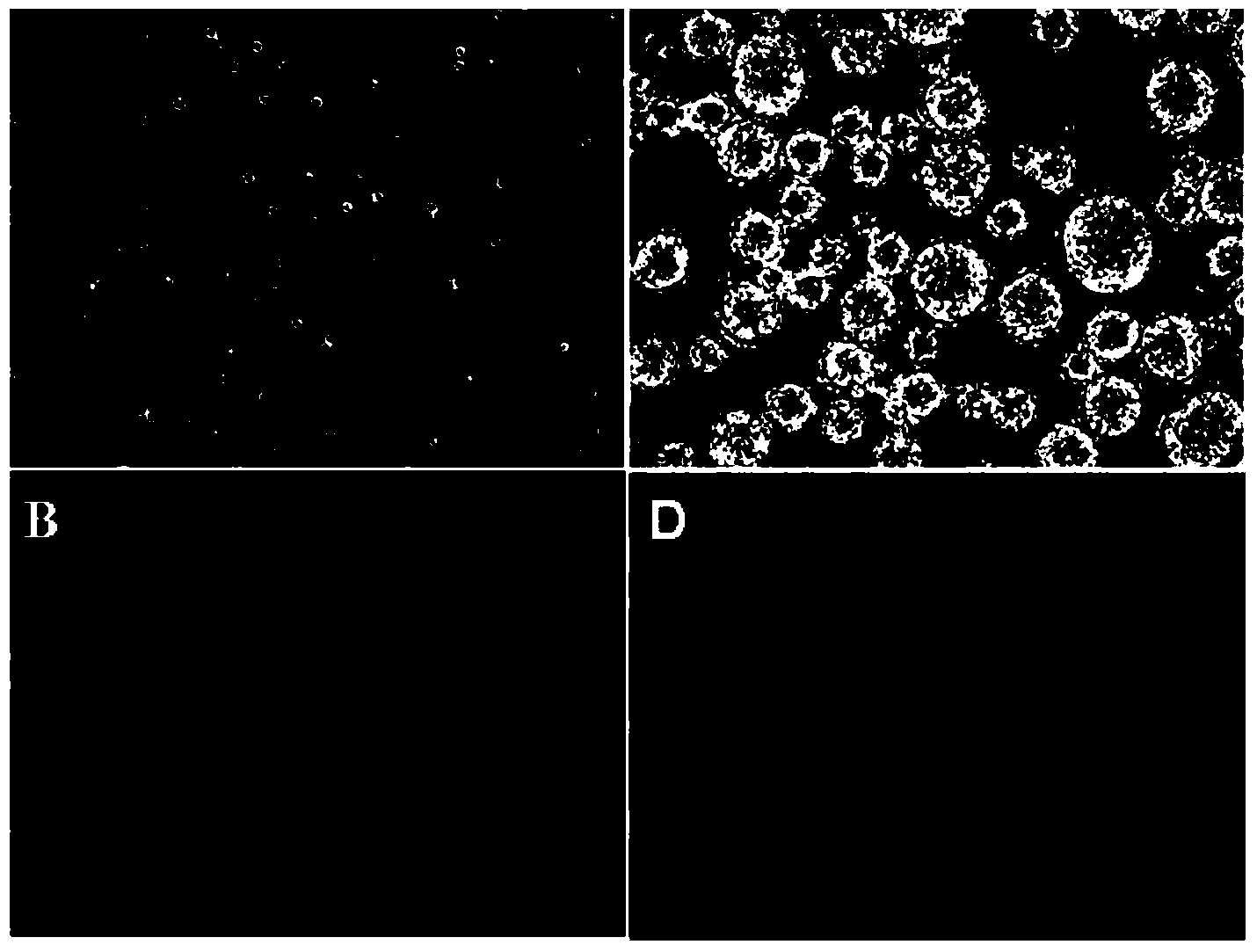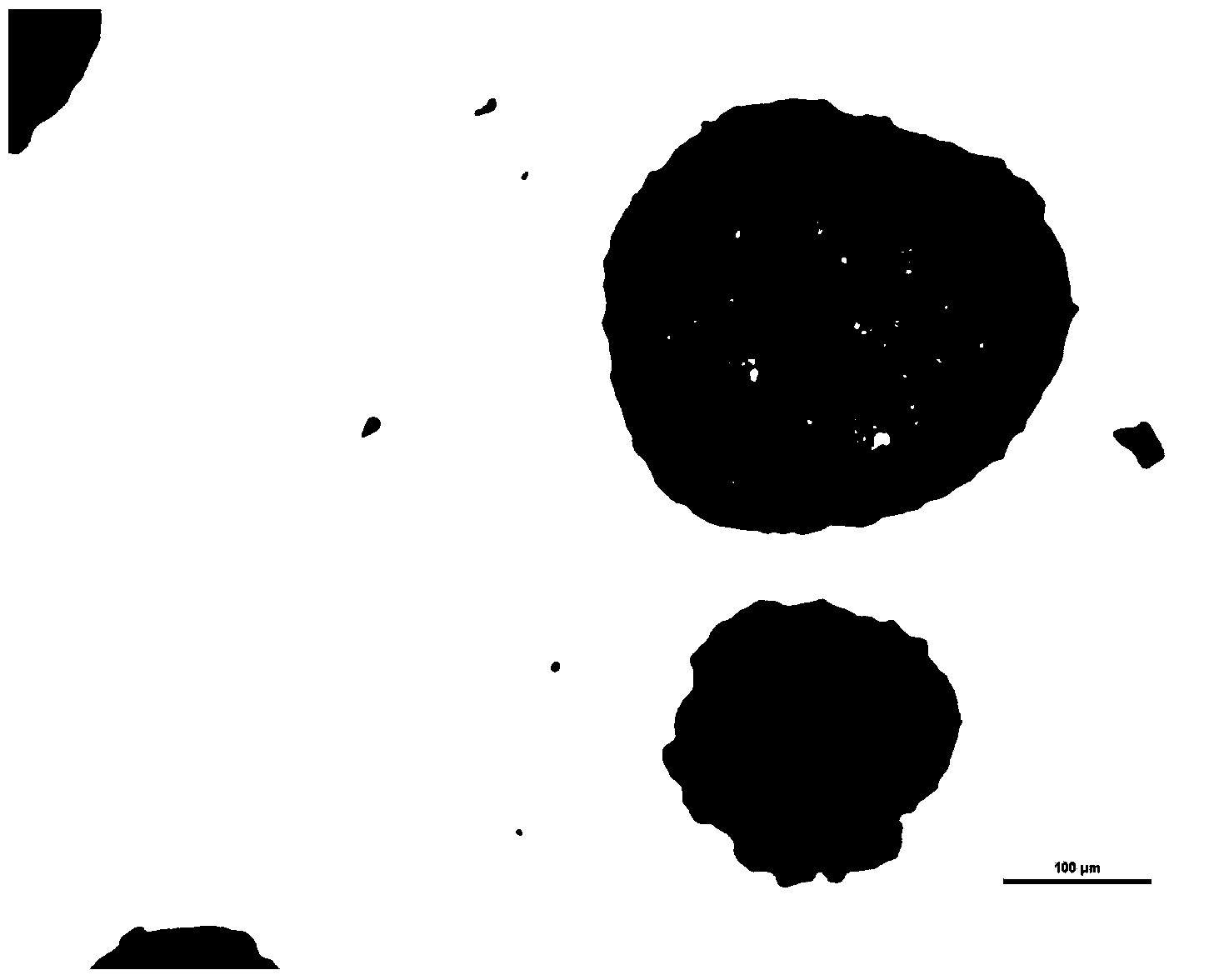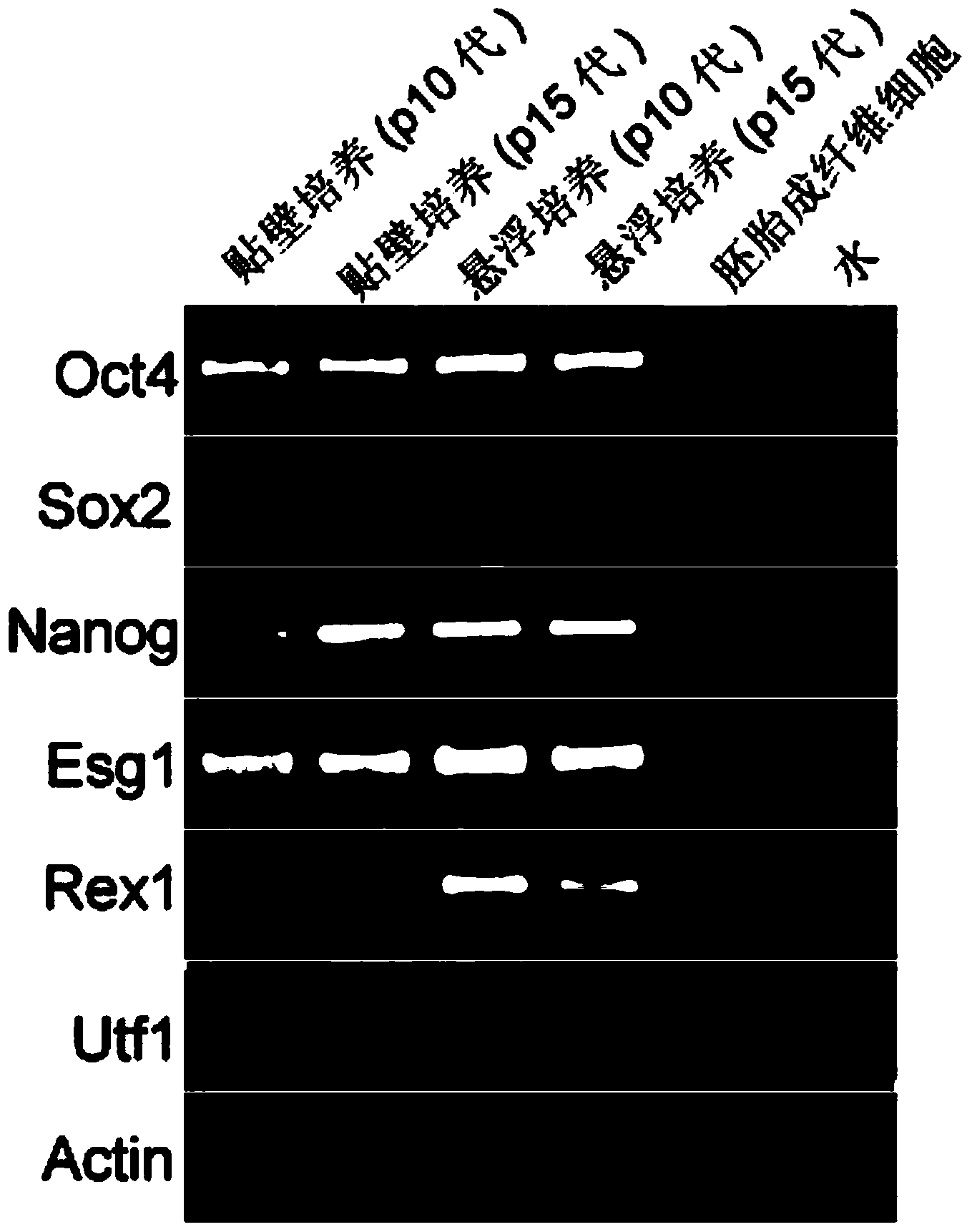Culture method free of multipotential stem cell without serum and feeder layer
A technology of pluripotent stem cells and pluripotent stem cells, which is applied in the field of serum-free and feeder-free pluripotent stem cell culture, can solve the problem of contamination of pluripotent stem cell applications, the inability to guarantee cell biological safety and quality control, and increase the complexity of experiments And other issues
- Summary
- Abstract
- Description
- Claims
- Application Information
AI Technical Summary
Problems solved by technology
Method used
Image
Examples
Embodiment 1
[0072] Embodiment 1: Preparation of culture medium without feeder layer and serum-free culture system
[0073] Culture medium preparation
[0074] This application uses DMEM / F12 medium, Neurolbasal medium, N2 supplement, B27 supplement, 2-mercaptoethanol (2-Mercaptoethanol), leukemia inhibitory factor (LIF), mitogen-activated protein kinase inhibitor (Stemolecule TM PD0325901), glycogen synthase kinase inhibitor 3 (Stemolecule TM CHIR99021) to prepare.
[0075] Wherein, each component of culture medium was purchased from:
[0076] DMEM / F12 medium was purchased from Gibco, the product number is 11320-082;
[0077] Neurolbasal medium was purchased from Gibco Company, the product number is 21103-049;
[0078] N2 additive was purchased from Gibco Company, the article number is 17502-048;
[0079] B27 additive was purchased from Gibco company, and the article number is 12587-010;
[0080] 2-Mercaptoethanol was purchased from Gibco Company, the article number is 21985-23; ...
Embodiment 2
[0094] Suspension culture of embodiment 2 mouse embryonic stem cells
[0095] This example uses the OCT4-GFP mouse embryonic stem cell line (OGR1) (purchased from the University of Illinois, USA), and the pluripotency of the embryonic stem cells can be visually judged by detecting the expression intensity of the green fluorescent signal.
[0096] First, mouse pluripotent stem cell clones cultured under traditional adherent culture conditions were digested with 0.05% trypsin at 37°C for 2 minutes, and the clones were blown into single cells.
[0097] Then, the prepared single cell suspension was 1.0×10 7 L -1 ~1.0×10 8 L -1 The density was inoculated in ultra-low adsorption culture dishes, placed at 37 ° C, 5% (volume ratio) CO 2 cultured in a humidified incubator. Cells should change the medium every 48 hours. When changing the medium, collect the cell suspension into a 15ml centrifuge tube, centrifuge at 800RPM (rev / min) for 3 minutes, discard the supernatant, add fres...
Embodiment 3
[0098] Subculture of embodiment 3 mouse embryonic stem cells
[0099] The mouse embryonic stem cells OGR1 cultured for 3-4 days in Example 2 were digested and reseeded at a certain cell density in a new super-adherent dish, and N2B27 was added for complete culture and suspension culture.
[0100] specifically:
[0101] (1) Transfer the amplified spherical cell suspension in Example 2 into a 15ml centrifuge tube, collect the cell spheres by centrifugation at 800RPM, discard the supernatant, add PBS and wash again by centrifugation at 800RPM, and wash the cell spheres with 0.05% Digest with trypsin at 37°C for 2-3min.
[0102] (2) Use trypsin inhibitor (T6414, Sigma) to terminate the digestion, and pipette the cell pellet to obtain a single-cell suspension. After adding an appropriate amount of PBS, centrifuge the above cell suspension at 1000RPM, discard the supernatant, resuspend the cells with fresh medium, and press 1.0×10 7 L -1 ~1.0×10 8 L -1 The single-cell suspen...
PUM
 Login to View More
Login to View More Abstract
Description
Claims
Application Information
 Login to View More
Login to View More - R&D
- Intellectual Property
- Life Sciences
- Materials
- Tech Scout
- Unparalleled Data Quality
- Higher Quality Content
- 60% Fewer Hallucinations
Browse by: Latest US Patents, China's latest patents, Technical Efficacy Thesaurus, Application Domain, Technology Topic, Popular Technical Reports.
© 2025 PatSnap. All rights reserved.Legal|Privacy policy|Modern Slavery Act Transparency Statement|Sitemap|About US| Contact US: help@patsnap.com



